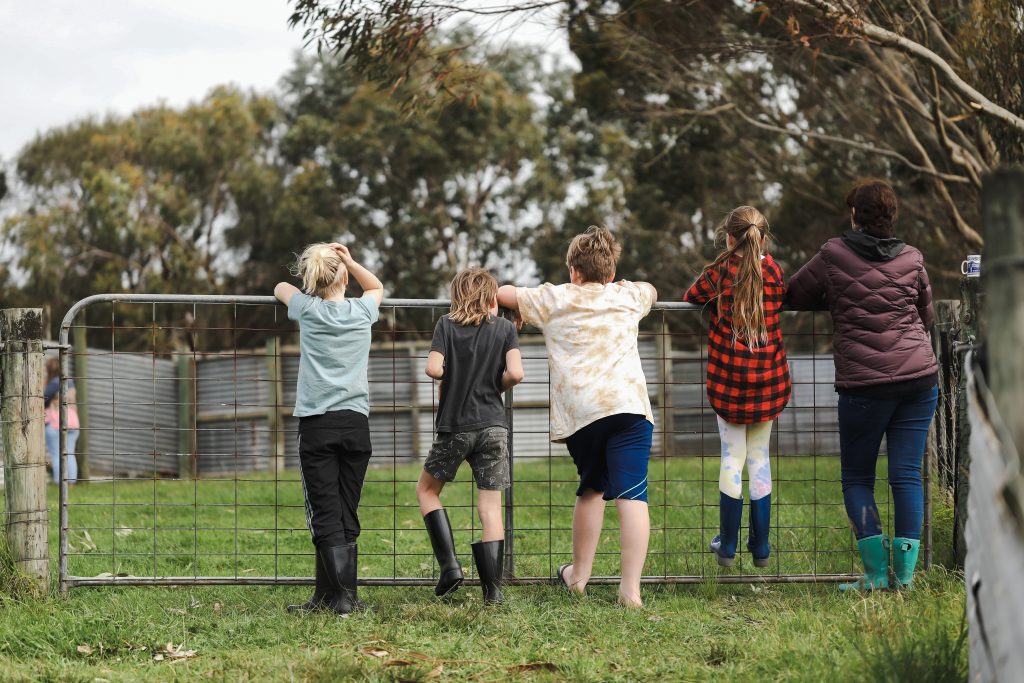Boosting rural healthcare for kids with complex medical needs
The RuralKidsGPS pilot program has improved integration of healthcare to children with complex needs, benefiting families as well as patient outcomes, in rural, regional and remote settings.

From dry ochre plains and family farms to mountain ranges and bush settings, the roughly 500,000 children who live outside major cities in NSW, reside in diverse landscapes and communities. To address specific challenges for rural children with complex health needs, a new model of care has been developed and piloted in the Murrumbidgee region of Southern NSW. RuralKidsGPS (Rural Kids Guided Personalised Service), has been led by Raghu Lingham, Professor in Paediatric Population and Health Services Research at UNSW Sydney. The project involved partnerships with Sydney Children’s Hospitals Network and local health districts in Southern, Western and Northern NSW. The pilot received funding from the Office for Health and Medical Research (OHMR) and demonstrated significant reductions in emergency department presentations and hospital admissions for the participating children. The program was also named as a finalist in the Health Innovation category of the NSW Health Awards 2024.
Meeting needs of children with complex health conditions
Research shows that around 45% of Australian children aged 0-14 have a chronic health condition that affects their quality of life. “My interest in specialising in the health of young children and young people stems from a deep commitment to addressing health inequities through research and innovation in healthcare delivery,” says Lingam, who also leads the UNSW Population Child Health Research Group at UNSW, Sydney. “The RuralKidsGPS project was developed to address specific challenges for children in rural and remote regions as they often experience fragmented care, which can lead to higher costs and poorer health outcomes.”
Integrating healthcare for rural kids
The RuralKidsGPS model of care centres on embedding paediatric care coordinators within local health districts, where they facilitate integrated care for children with complex medical needs. “This model utilises shared care plans and technology-enabled healthcare to reduce unnecessary hospital visits and enable children to receive care closer to home,” says Lingam. “The focus is on building local workforce capacity and providing holistic support to families.”
A wide range of health professionals, including paediatricians, allied health providers, and community health workers, contributed to the development of RuralKidsGPS. “They emphasised the need for better care coordination, the integration of services across different levels of care, and the use of technology to support remote healthcare delivery.,” Lingam explains. “These priorities were central to the design of the RuralKidsGPS model.”

Co-designing with parents and carers
Parents were included in the co-design of the RuralKidsGPS project. “Their involvement ensured that this model of care is truly family-centred,” Lingam points out. “Over 50 parents contributed to the co-design process, providing critical insights that shaped the program. Consulting with parents highlighted the importance of the healthcare system having the ability to liaise with a single point of contact provided by those who understand the child’s needs and can co-ordinate their care effectively.”
Parent and carer feedback also led to the integration of paediatric care coordinators. They worked closely with families to develop personalised care plans and to support them to navigate the healthcare system, ensuring that their healthcare was more co-ordinated and accessible.
Improving health outcomes for children
The RuralKidsGPS pilot ran for approximately two years from July 2021 to February 2024. Data from the pilot program showed that it also improved access to care, reduced the travel burden on families, and enhanced quality of life for children and their families in rural regions.
“The success of RuralKidsGPS highlights the critical importance of co-designing healthcare solutions with the families and communities they are meant to serve,” Lingam points out. “This project serves as a model for how targeted, collaborative innovation can lead to meaningful improvements in the health and wellbeing of vulnerable populations and address the broader challenges of healthcare access and equity.”
Currently RuralKidsGPS has been rolled out across four NSW local health districts – Murrumbidgee, Northern, Southern, and Western NSW. “The success of the pilot has provided a strong case for broader adoption,” says Lingam. “The aim is to expand the program to additional regions, with the goal of making this model of care a permanent fixture in rural and regional healthcare delivery and available to all children with complex health needs. Now because of the pilot, we have established paediatric care co-ordinator roles across multiple health districts.”
The impact of OHMR support
“The OHMR Translational Research Grant Scheme (TRGS) was instrumental in supporting the implementation of the RuralKidsGPS project,” says Lingam. “It helped us to facilitate the integration of innovative care models that have demonstrated significant improvements in health outcomes for children in rural areas. OHMR has also been a vital partner in advancing translational research and innovation in healthcare. Their support has enabled us to take evidence-based research and implement it in real-world settings, leading to better health outcomes for children with complex medical needs particularly in under-served rural areas.”
Find out more about TRGS here.
Updated 5 months ago